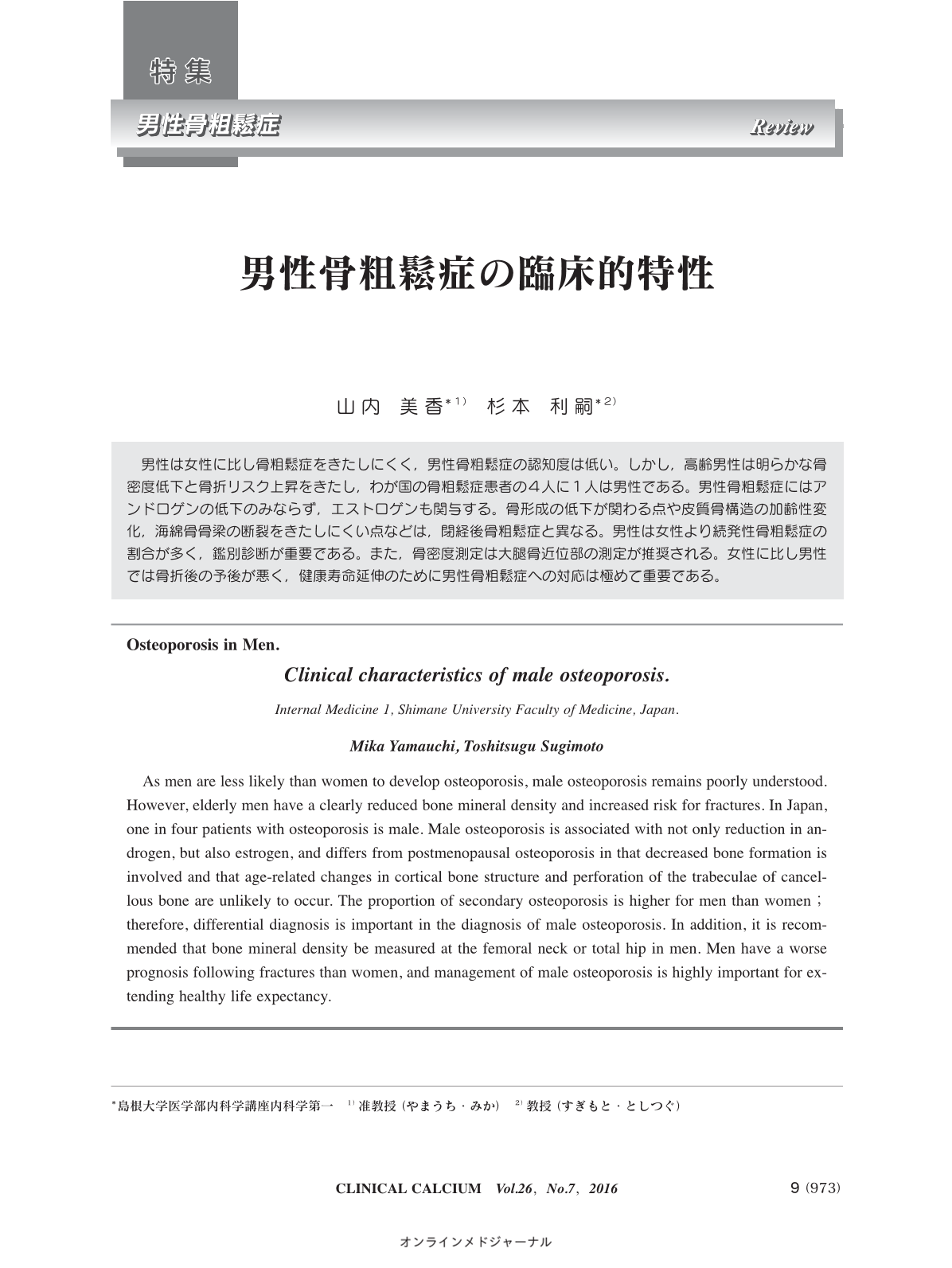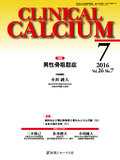Japanese
English
- 有料閲覧
- Abstract 文献概要
- 1ページ目 Look Inside
- 参考文献 Reference
男性は女性に比し骨粗鬆症をきたしにくく,男性骨粗鬆症の認知度は低い。しかし,高齢男性は明らかな骨密度低下と骨折リスク上昇をきたし,わが国の骨粗鬆症患者の4人に1人は男性である。男性骨粗鬆症にはアンドロゲンの低下のみならず,エストロゲンも関与する。骨形成の低下が関わる点や皮質骨構造の加齢性変化,海綿骨骨梁の断裂をきたしにくい点などは,閉経後骨粗鬆症と異なる。男性は女性より続発性骨粗鬆症の割合が多く,鑑別診断が重要である。また,骨密度測定は大腿骨近位部の測定が推奨される。女性に比し男性では骨折後の予後が悪く,健康寿命延伸のために男性骨粗鬆症への対応は極めて重要である。
As men are less likely than women to develop osteoporosis, male osteoporosis remains poorly understood. However, elderly men have a clearly reduced bone mineral density and increased risk for fractures. In Japan, one in four patients with osteoporosis is male. Male osteoporosis is associated with not only reduction in androgen, but also estrogen, and differs from postmenopausal osteoporosis in that decreased bone formation is involved and that age-related changes in cortical bone structure and perforation of the trabeculae of cancellous bone are unlikely to occur. The proportion of secondary osteoporosis is higher for men than women;therefore, differential diagnosis is important in the diagnosis of male osteoporosis. In addition, it is recommended that bone mineral density be measured at the femoral neck or total hip in men. Men have a worse prognosis following fractures than women, and management of male osteoporosis is highly important for extending healthy life expectancy.



